#ujjain maha kumbh mela
Explore tagged Tumblr posts
Text
Kumbh Mela 🏵️
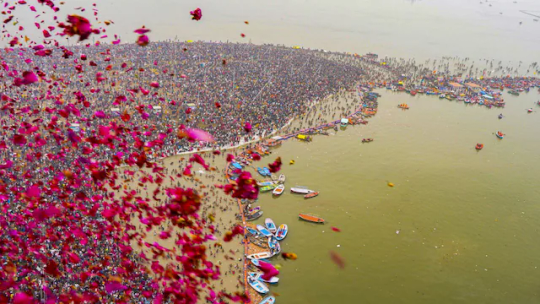
The Mahakumbh is one of the world's most solemn and largest religious meetings, held with great dedication and spiritual passion. This once-in-twelve-year event is more than just a festival; it is a convergence of culture, faith, and spirituality that attracts millions of followers from all over the world.
During the Kumbh Mela, several ceremonies take place, including the traditional procession of Akharas known as ‘Peshwai’ on elephant backs, horses, and chariots, the shining swords and rituals of Naga Sadhus during ‘Shahi Snaan’, and many other cultural activities that attract millions of pilgrims to the event.
Origin of Kumbh Mela from the scriptures:
The story of Mahakumbh begins with the Devas (gods) and Asuras (demons) churning the ocean (Samudra Manthan) in search of the nectar of immortality (Amrit). The significance of Kumbh is centered on the account of the Samudra Manthan, which was performed by the gods and demons to gain the priceless Ratnas, or jewels, and amrita, or nectar of immortality. The mountain Mandrachala served as a churning stick, with Nagraja Vasuki acting as the rope. Lord Vishnu himself took the form of Kasava, or tortoise, and gave the foundation for the mountain Mandrachala, fearing that it would slip and sink into the ocean. The first to emerge from this churning was poison, which was consumed by Lord Shiva, who later became known as the Nilkantha.
After churning the ocean, Dhanvantri emerged carrying a pitcher of amrita, or the elixir of immortality. To make sure the Asuras don’t get it, Lord Vishnu asked Garuda Dev, to fly away from there with the pot of nectar. When Garuda Dev was carrying the pot, four drops of nectar fell at four places, Haridwar, Ujjain, Nashik, and Prayagraj. Since then, these four places have become great pilgrimage sites.
In other texts, it is said that Indra’s son, Jayant, ran off with the pot. The Sun, his son Shani, Brihaspati (the planet Jupiter), and the Moon went along to protect him and the pot. As Jayant ran, the amrita spilled at four spots: Haridwar, Prayagraj, Ujjain, and Nashik-Trimbakeshwar. He ran for 12 days, and as one day of the Devas equals one year of humans, Kumbh Mela is celebrated at these locations every 12 years, based on the relative positions of the Sun, the Moon, and Jupiter.
All four places are located on the banks of rivers — Haridwar has the Ganga, Prayagraj is the sangam or meeting point of Ganga, Yamuna and the Saraswati, Ujjain has the Kshipra, and Nashik-Trimbakeshwar the Godavari.
It is believed that taking a dip in these rivers during Kumbh, amid the specific alignment of the heavenly bodies, washes away one’s sins and accrues punya (spiritual merit).
The traditional Kumbh Mela is celebrated every three years, the Ardh (half) Kumbh Mela every six years in Haridwar and Allahabad (Prayag), and the Purna (full) Kumbh Mela every twelve years at four locations: Prayag (Allahabad), Haridwar, Ujjain, and Nashik, dependent on planetary motions. The Maha Kumbh Mela is held at Prayag after 144 years (after 12 ‘Purna Kumbh Melas’).

If we want to understand the historical reference, then you can find the mention of a big gathering like Kumbh Mela in the 19th century, but even before that, if we look at the basis of this gathering, then there used to be the festival of Magh Snan in which people used to bathe in holy rivers so that they could wash away their sins and attain salvation. In ancient texts like Rigveda, stories of Samudra Manthan and Amrit have been given, which help us to understand the basic basis of this festival. Then if we move ahead, in the time of the Gupta period and Mauryan period also, there were many such festivals.
We find the mention of Kumbh Mela. With time, Kumbh Mela became a symbol of unity and spiritual knowledge. At this conference, many saints, ascetics, and devotees started to meet. Kumbh Mela is held at four holy places. The first place is Prayagraj. Prayagraj is known for Triveni Sangam, where three holy rivers meet – Ganga, Yamun, and the hidden Saraswati River. The second place where Kumbh is held is Haridwar. Here, the holy river Ganga comes down from the mountains. Where people take a bath in the Ganga to purify their mind and soul.
Apart from the Ganga River, Haridwar is also known for its peace and spiritual energy. Then comes the third place which is Nashik. Nashik is located on the banks of the Godavari River. There are many religious beliefs and stories from the Puranas here too. The fourth Kumbh place is Ujjain. Ujjain is a city located on the banks of the Shipra River which has a religious and spiritual history. Bathing here also becomes a part of the spiritual journey of the people. It is decided at which of these four places the Kumbh Mela will be held, based on the astronomically aligned places.
Astrological alignments for the occurrence of Kumbh Mela:
As it occurs in 12 years, the time depends on the position of satellite bodies, especially Jupiter. Jupiter takes about 12 years to complete one orbit around the Sun and the places are decided according to those 12 years. Kumbh Mela is held at every place once in 12 years. Kumbh Mela is held when Jupiter enters a specific zodiac sign and any kind of religious work is considered auspicious during this time.
When Jupiter is in Aquarius or Kumbh Rashi, and the Sun and Moon in Aries and Sagittarius respectively, Kumbh is held at Haridwar.
When Jupiter is in Tauras, and the Sun and Moon are in Capricorn or Makar (thus, Makar Sankranti is also in this period) the Kumbh is held at Prayag.
When Jupiter is in Leo or Simha, and the Sun and Moon are in Cancer, the Kumbh is held at Nashik and Trimbakeshwar, which is why they are also called the Simhastha Kumbh.
Significance and employment generation due to Kumbh Mela:
Saints and sages from the monasteries and religious personalities come, there are also events of Katha and Kirtan, many people from different states come who showcase different cultures here, you will also get to see the performance of their folk songs, dances and arts in this Kumbh Mela.
UNESCO has recognized the Kumbh Mela as the Intangible Cultural Heritage of Humanity and this shows the cultural significance of Kumbh Mela for India.
The significance of Kumbh Mela is not limited only to the religious perspective, if we look at it from the economic perspective, during the Kumbh Mela, lakhs of people travel from one place to another, which gives a boost to the travel industry and provides huge support to the economy. If we try to understand it in terms of data, the government spent Rs 4200 crore to organize the Kumbh Mela 2019, but the economic value generated in this Kumbh Mela was Rs 1,20,000 crore, and at the same time, 6 lakh people got jobs in a single Kumbh Mela. If we talk only about the hospitality industry, then 1 lakh jobs were generated in these.
This year, the government spent around Rs 7000 crore and the economic value predicted to be generated is around Rs 2,00,000 crore.
66 notes
·
View notes
Text
[ad_1] Paromita Das GG News Bureau New Delhi, 13th Jan. The Maha Kumbh Mela of 2025, which begins on January 13 and concludes on February 26 in Prayagraj, Uttar Pradesh, is not just a religious congregation; it is a spiritual spectacle that draws millions from across the globe. At its core lies the Shahi Snan, the royal bathing ritual considered the pinnacle of Hindu devotion. Taking place at the confluence of the Ganga, Yamuna, and the mythical Saraswati rivers—the Triveni Sangam—the Shahi Snan embodies the essence of faith, purification, and liberation. As devotees prepare for this once-in-12-years Maha Kumbh, the Shahi Snan on key dates such as Makar Sankranti (January 14), Mauni Amavasya (January 29), and Basant Panchami (February 3) will serve as both a personal and collective journey into the heart of Hindu mythology, ritualistic tradition, and spiritual rejuvenation. The Mythological Significance of the Shahi Snan The origins of the Shahi Snan are rooted in Hindu mythology, particularly the legend of the Samudra Manthan (the churning of the ocean). According to this ancient tale, the Devas (gods) and Asuras (demons) worked together to churn the ocean to retrieve the nectar of immortality (Amrit). As the Amrit emerged, a cosmic battle ensued between the two factions, spilling drops of the nectar at four sacred locations: Prayagraj, Haridwar, Nashik, and Ujjain. These locations became sanctified as the sites of the Kumbh Mela. The Shahi Snan, which translates to “royal bath,” holds immense spiritual significance. It is believed that bathing in the holy waters of the Triveni Sangam during the auspicious moments of the Kumbh Mela cleanses one of past sins, liberates the soul from the cycle of birth and death, and paves the way for Moksha (salvation). The ritual is not merely symbolic but represents a deeper connection with the cosmos, aligning one’s physical self with the divine order of the universe. The Royal Procession: A Sight of Divine Grandeur The Shahi Snan is marked by a grand procession of Akharas (monastic orders), led by Naga Sadhus, Mahamandaleshwars, and other revered saints. Dressed in saffron robes or adorned with ash, these ascetics march to the Sangam in a majestic display of devotion and spiritual authority. The Akharas, representing different sects of Hinduism, take turns to perform the sacred bath. The hierarchy and order of bathing have been meticulously preserved for centuries, with each Akhara asserting its prominence in this spiritual hierarchy. The processions are accompanied by chants, traditional music, and the blowing of conch shells, creating an atmosphere that is both festive and deeply spiritual. The significance of the Shahi Snan lies not only in its mythological roots but also in its power to bring together diverse sects and millions of devotees in a shared act of faith. The act of bathing at the Sangam during the Shahi Snan is considered the most auspicious moment of the Kumbh Mela, as it is believed to magnify the spiritual benefits manifold. Makar Sankranti: The First Shahi Snan The Shahi Snan on January 14, 2025, coinciding with Makar Sankranti, marks the beginning of the bathing rituals. Makar Sankranti is the day when the Sun transitions into the zodiac sign of Capricorn, symbolizing a shift toward longer days and renewed energy. It is considered highly auspicious in Hindu astrology, making it the perfect time to take the sacred dip and begin the journey of purification. Mauni Amavasya: The Second Shahi Snan The Shahi Snan on January 29, Mauni Amavasya, is perhaps the most significant of all. On this day, devotees practice silence (Mauna) to focus on their inner self and spiritual awakening. This day is associated with the creation of the universe in Hindu cosmology and holds profound significance for those seeking to deepen their spiritual practice. Basant Panchami: The Final Shahi Snan The Shahi Snan on February 3, Basant Panchami, marks the arrival of spring and the culmination of the main bathing rituals.
Dedicated to the goddess Saraswati, this day celebrates knowledge, wisdom, and creativity. Taking a dip on this day is believed to wash away ignorance and illuminate the path to spiritual enlightenment. Cultural and Spiritual Dimensions of the Maha Kumbh Mela The Maha Kumbh Mela is not just a religious event; it is a cultural and spiritual extravaganza. Alongside the Shahi Snan, the festival offers a rich tapestry of cultural performances, spiritual discourses, and art exhibitions. Pilgrims and tourists alike can witness devotional music, Kathak performances, and traditional crafts, offering a glimpse into Bharat’s diverse heritage. The gathering of millions at the Triveni Sangam reflects the unity of humanity in its quest for spiritual fulfillment. From hermits meditating in isolation to families participating in rituals together, the Maha Kumbh Mela bridges the gap between the individual and the collective, the earthly and the divine. The Timeless Relevance of the Shahi Snan In a world increasingly dominated by materialism and technology, the Shahi Snan serves as a reminder of humanity’s deeper spiritual roots. The ritual’s emphasis on purification, humility, and connection with the cosmos resonates beyond religious boundaries, offering a universal message of renewal and transformation. While critics may dismiss such rituals as archaic, their enduring relevance lies in their ability to foster a sense of belonging and purpose among participants. The Shahi Snan is not just about washing away sins; it is about reconnecting with one’s higher self, fostering inner peace, and embracing a holistic worldview. Conclusion: A Ritual of Faith and Transformation As millions gather at the Triveni Sangam for the Shahi Snan during the Maha Kumbh Mela 2025, they partake in a ritual that transcends time, geography, and individual identity. The sacred bath is more than a ritual—it is a profound act of devotion, surrender, and renewal. The significance of the Shahi Snan lies in its ability to unite people in their shared pursuit of spiritual fulfillment. It exemplifies the power of faith to inspire and transform, reminding humanity of its interconnectedness with the cosmos and with one another. In celebrating the Shahi Snan, the Maha Kumbh Mela reaffirms Bharat’s rich spiritual heritage, offering a beacon of hope, faith, and renewal for generations to come. The post Shahi Snan 2025: A Sacred Journey of Purification and Spiritual Renewal at the Maha Kumbh Mela appeared first on Global Governance News- Asia's First Bilingual News portal for Global News and Updates. [ad_2] Source link
1 note
·
View note
Text
Indian culture
Blog by Maan kutti.G

Indian Performing arts
Indian Performing arts Art forms in India are ancient but are still in practice today. The performing arts, in particular, enjoy a status in our culture and showcase our tradition. Performing arts aren’t just about artistic expression. It is our tradition;..
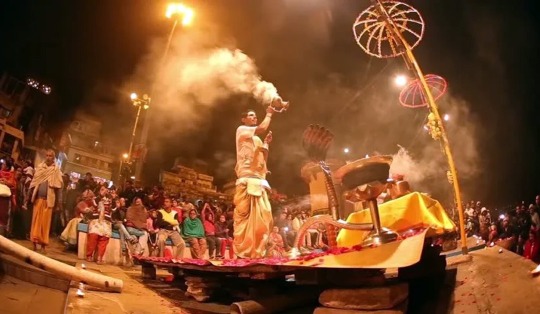
Kumbh Mela
All About Kumbh Mela The Kumbh Mela is probably the biggest Hindu festival celebrated four times in a 12-year time span. In fact, the pilgrimage rotates around four sacred river banks. These are the Ganges River in Haridwar, the Godavari in Nashik, Shipra in Ujjain,...
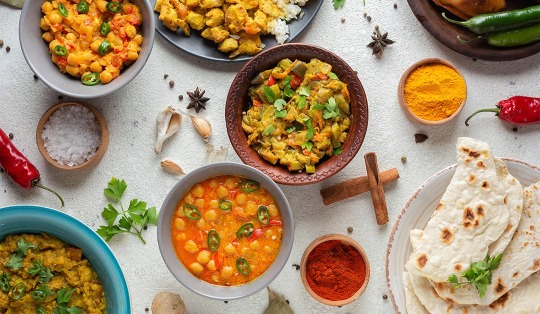
Indian Food And Culture
Indian Food And Culture: Things To Know When we talk about Indian cuisine, we often refer to lip-smacking delicacies that should be eaten in groups until everyone is full. You can get an assortment of dishes together in a single serving, which is also known as the...
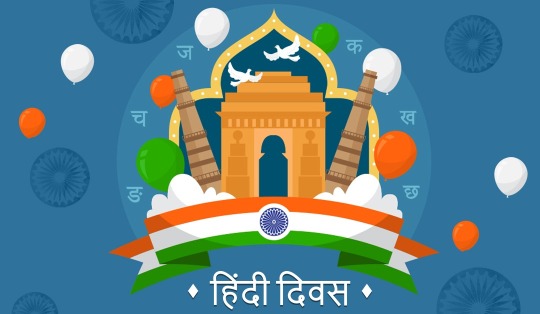
Hindi Diwas
Hindi Diwas: History, Significance, And Key Facts Hindi Diwas, which is celebrated on 14th September every year in India, is dedicated to promoting and propagating the official language, Hindi. After the four widely spoken languages,such as English, Spanish, and...
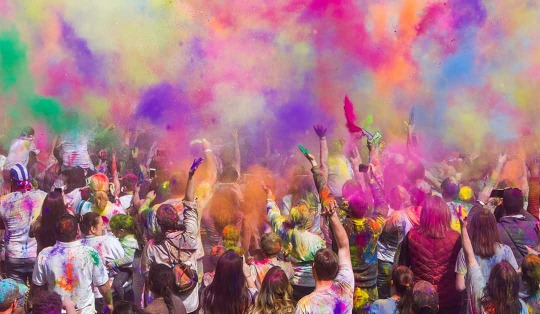
Holi festival
Holi Festival of India The Holi festival of India is one of the most famous festivals that draw crowds from all over the world, so that they can take advantage of the festive date, to enjoy this amazing gathering Holi is celebrated in February or March every year...
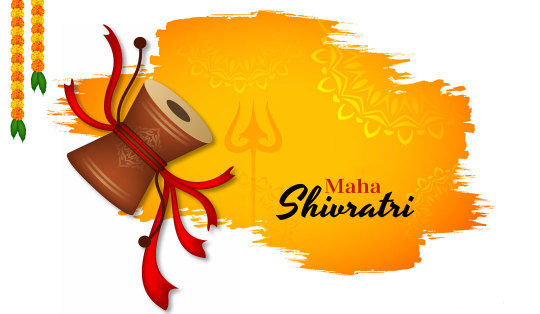
Maha Shivratri Festival
Maha Shivratri Festival of India is an annual festival dedicated to Lord Shiva and it literally means the ‘Night of Lord Shiva’. This festival usually falls in the month of Phalguna or Maagh of the Hindu Lunar Calendar, which generally corresponds to...
Blog by Maan Kutti.G
Bcom
2 notes
·
View notes
Text
कुंभ मेला 2025 के बाद अगला कुंभ कहां और कब होगा?

प्रयागराज के त्रिवेणी संगम पर आयोजित महाकुंभ 2025 धार्मिक और सांस्कृतिक महत्व के कारण देश-विदेश से श्रद्धालुओं को आकर्षित कर रहा है। इस मेले की शुरुआत 13 जनवरी 2025 को हुई और इसका समापन 26 फरवरी 2025 को होगा। कुंभ मेला क्यों महत्वपूर्ण है? कुंभ मेले का मुख्य उद्देश्य श्रद्धालुओं को पवित्र स्नान के माध्यम से आत्म-शुद्धि का अवसर प्रदान करना है। धार्मिक मान्यता के अनुसार, इस दौरान गंगा, यमुना, सरस्वती, गोदावरी और शिप्रा नदियों का जल अमृत तुल्य हो जाता है। कुंभ मेला साधु-संतों, नागा साधुओं, गुरुओं और भक्तों के मिलन का प्रमुख केंद्र भी माना जाता है, जहां भक्ति, सेवा और आध्यात्मिक ज्ञान का आदान-प्रदान होता है। कुंभ मेला कहां-कहां आयोजित होता है? भारत में कुंभ मेला चार पवित्र स्थानों पर आयोजित किया जाता है: - प्रयागराज (उत्तर प्रदेश) - त्रिवेणी संगम पर - हरिद्वार (उत्तराखंड) - गंगा नदी के तट पर - उज्जैन (मध्य प्रदेश) - क्षिप्रा नदी के तट पर - नासिक (महाराष्ट्र) - गोदावरी नदी के तट पर महाकुंभ कब होगा? शास्त्रों के अनुसार, महाकुंभ 144 वर्षों में केवल एक बार होता है। 2025 में आयोजित महाकुंभ के बाद अगला महाकुंभ वर्ष 2169 में प्रयागराज में होगा। अगला कुंभ मेला कब और कहां होगा? महाकुंभ के अलावा हर 12 वर्षों में पूर्ण कुंभ और हर 6 वर्षों में अर्धकुंभ का आयोजन होता है। प्रयागराज कुंभ 2025 के बाद अगले कुंभ मेले का आयोजन इस प्रकार होगा: - 2027 में नासिक (महाराष्ट्र) – त्र्यंबकेश्वर में कुंभ मेला - 2028 में उज्जैन (मध्य प्रदेश) – सिंहस्थ महाकुंभ - 2030 में प्रयागराज (उत्तर प्रदेश) – अर्धकुंभ निष्कर्ष कुंभ मेला भारतीय संस्कृति, आस्था और अध्यात्म का प्रती�� है। यह न केवल धार्मिक अनुष्ठान है, बल्कि सामाजिक और सांस्कृतिक रूप से भी महत्वपूर्ण है। श्रद्धालु इन पवित्र स्नानों के माध्यम से मोक्ष की प्राप्ति का मार्ग खोजते हैं। The Kumbh Mela 2025 in Prayagraj is a grand religious festival that attracts millions of devotees. After this event, the next Kumbh Mela will be held in Nashik in 2027, followed by Ujjain Kumbh 2028 and Ardh Kumbh in Prayagraj in 2030. The Maha Kumbh Mela occurs once every 144 years, with the next one scheduled in 2169. This sacred gathering offers a chance for spiritual cleansing and devotion. Read the full article
0 notes
Text
Maha Kumbh 2025: Tips To Know If You Are Planning To Visit The Mega Event

The Maha Kumbh is one of the grandest spiritual and cultural events in the world, attracting millions of pilgrims, tourists, and spiritual seekers. The upcoming Maha Kumbh Mela 2025 at Prayagraj is expected to be a historic event, offering visitors a unique opportunity to witness this grand spectacle of faith and tradition. If you are planning to attend, this guide provides essential tips to ensure a smooth and enriching experience.
Understanding the Significance of Maha Kumbh
The History of Maha Kumbh dates back thousands of years and is rooted in Hindu mythology. It commemorates the battle between gods and demons over the sacred Amrit (nectar of immortality). The nectar is believed to have fallen at four locations—Prayagraj, Haridwar, Ujjain, and Nashik—giving rise to the Kumbh Mela at these locations in a rotational manner.
The Maha Kumbh Mela occurs once every 12 years in Prayagraj, at the confluence of the sacred rivers Ganga, Yamuna, and the mythical Saraswati. The event is marked by holy dips (Shahi Snan), spiritual discourses, and massive religious gatherings.
Maha Kumbh Mela 2025 Dates and Key Bathing Days
For those planning their visit, knowing the Maha Kumbh Mela 2025 dates is crucial. Here are the key bathing days for Maha Kumbh 2025:
January 13, 2025 – Paush Purnima
January 14, 2025 – Makar Sankranti
January 29, 2025 – Mauni Amavasya (Main Royal Bath)
February 3, 2025 – Basant Panchami
February 12, 2025 – Maghi Purnima
February 26, 2025 – Maha Shivratri
These dates hold immense spiritual significance, and millions of devotees take part in the ritualistic baths during these days.
Best Time to Visit Maha Kumbh 2025
The Best Time to Visit Maha Kumbh depends on your preferences and comfort level:
Early Visitors (January): Ideal for those who prefer a quieter and more immersive experience before the peak crowds.
Main Bathing Days (January 29, February 3, February 12): If you want to witness the grandest rituals and experience the true vibrancy of the festival, these dates are best.
Late Visitors (February end): Suitable for those who wish to experience the event with relatively fewer crowds but still be part of the spectacle.
Travel and Accommodation Tips for Maha Kumbh Mela 2025
Where to Stay During Maha Kumbh 2025
Given the massive influx of visitors, booking accommodation well in advance is highly recommended. Here are some options:
Budget Stay: Dharamshalas and tented accommodations provide economical lodging.
Mid-Range: Guesthouses and hotels offer comfortable stays with essential amenities.
Luxury Camps: Premium tented camps with modern facilities are available for those seeking a high-end experience.
Essential Event Planning Tips for Maha Kumbh 2025
Attending Maha Kumbh 2025 requires meticulous planning to navigate the vast crowds and ensure a fulfilling experience. Here are some key event planning tips:
Plan Early: Book transport and accommodation as early as possible.
Travel Light: Carry only essentials, including warm clothing, sturdy footwear, and necessary documents.
Stay Hydrated: Carry bottled water and avoid consuming food from unhygienic sources.
Stick to Designated Routes: Follow the paths marked by authorities to avoid getting lost.
Secure Your Belongings: Be cautious of pickpockets in crowded areas.
Understanding the Crowd Updates at Maha Kumbh 2025
The Maha Kumbh Mela is one of the largest human gatherings on the planet, attracting millions of devotees and tourists. The Uttar Pradesh government has estimated that nearly 100 million people will participate in the holy dip on Mauni Amavasya alone, making crowd management a critical aspect of the event. In previous years, stampedes have been a major concern, with uncontrolled surges of devotees at the bathing ghats leading to tragic incidents. For instance, in 2025, an estimated 36 million people had performed the ritual by 10 a.m., despite temporary closures of roads leading to Prayagraj.
Authorities are employing aerial surveillance, mobile tracking, and other advanced monitoring techniques to regulate the flow of pilgrims and ensure safety. However, visitors must remain cautious, follow designated paths, and be mindful of safety measures to avoid overcrowding and potential hazards.
Conclusion: Maha Kumbh 2025 Insights
The Maha Kumbh Mela 2025 is a once-in-a-lifetime opportunity to immerse yourself in India’s spiritual and cultural heritage. With proper planning, an understanding of the Maha Kumbh Mela 2025 dates, and the right logistical support, you can ensure a fulfilling and transformative experience. Whether you seek spiritual enlightenment, cultural exposure, or a seamless pilgrimage, careful planning and expert assistance from SKIL Events can make your journey truly memorable.
Book your trip today and be part of the world’s largest religious gathering!
0 notes
Text
From Sky to Sanctity: Maha Kumbh by Helicopter with Book Your Helicopter
The Maha Kumbh Mela is one of the largest spiritual gatherings in the world. Held every 12 years, it draws millions of devotees from around the world to bathe in the sacred rivers, perform rituals, and connect with their spiritual selves. For those who wish to experience this monumental event from a unique vantage point, Book Your Helicopter offers an exclusive way to witness the Maha Kumbh Mela — from the sky. The helicopter services provided by Book Your Helicopter offer a bird’s-eye view of this ancient, awe-inspiring event, allowing both devotees and travelers to witness the grand scale and significance of the Kumbh Mela like never before.

A Unique Helicopter Experience from Jaipur to the Maha Kumbh Mela
While the Kumbh Mela can be overwhelming due to the size of the crowds, the long walks, and the hustle and bustle, Book Your Helicopter offers a way to avoid the congestion and witness the event from above. With Jaipur to Maha Kumbh by helicopter services now available, the company ensures that you can enjoy a quick, comfortable, and unforgettable experience, with breathtaking views of one of the world’s largest human gatherings. Whether you're a pilgrim seeking spiritual solace or a traveler in awe of the vastness of the event, flying from Jaipur to the Kumbh Mela by helicopter provides a seamless and extraordinary way to experience this sacred occasion.
The Maha Kumbh Mela: A Glimpse into Spiritual Heritage
The Kumbh Mela is not just a religious gathering; it is a testament to India’s rich spiritual and cultural heritage. The event, celebrated at four sacred locations — Allahabad (Prayagraj), Haridwar, Nashik, and Ujjain — is believed to be the site where the nectar of immortality (amrit) fell from the heavens, and thus the waters are considered extremely purifying. The occasion features elaborate rituals, sacred processions, and millions of devotees performing the holy dip in the river.
The Maha Kumbh Mela, which is held once every 12 years at the Prayagraj (Allahabad) location, is especially significant, as it attracts the largest crowd. People come from all over the world, including foreign tourists and pilgrims from all walks of life. It is not just a religious festival; it’s an embodiment of faith, unity, and the quest for spiritual enlightenment. The scale of the event is staggering — millions of people converge on the riverbanks, participating in one of the largest human gatherings in the world.
However, navigating through such a colossal event can be overwhelming, and that’s where Book Your Helicopter steps in.
A New Way to Experience the Kumbh Mela: Helicopter Tours
While the idea of being part of the Kumbh Mela is thrilling, it can also be daunting due to the sheer size of the crowd, the long walks to get to the river, and the often crowded conditions. With Book Your Helicopter, you can take your experience to the next level by choosing a helicopter tour that allows you to soar above the massive crowds and take in the breathtaking view of the Mela from the sky.
Why Choose Helicopter Tours for the Kumbh Mela?
Spectacular Aerial View: The sheer magnitude of the Kumbh Mela is best appreciated from above. When you book a helicopter ride with Book Your Helicopter, you’re treated to a panoramic view of the festival. You can marvel at the sprawling tents, the sea of devotees, and the sacred river, all from the comfort of your aircraft. This is a perspective you can’t experience by standing on the ground — it gives you a profound sense of the vastness of the event, and the spiritual energy that fills the air.
Time-Saving and Convenient: The Kumbh Mela can be overwhelming in terms of the logistics involved. Navigating through the crowds and walking long distances can take up significant time, especially during the peak bathing days. A helicopter ride drastically reduces the time you would otherwise spend on transportation, offering a direct and swift journey to the main event areas. For those who are short on time or simply want to experience the highlights of the event without getting lost in the chaos, this is the perfect solution.
Exclusive and VIP Experience: A helicopter ride with Book Your Helicopter offers an unparalleled experience. The service is tailored to your comfort, ensuring a premium experience that adds a sense of exclusivity to your trip. Whether you are visiting as a devotee seeking a peaceful aerial moment or a tourist eager to witness the grand spectacle, this option ensures you avoid the crowds while still being part of one of the most important spiritual gatherings on Earth.
Cultural and Spiritual Significance: The Kumbh Mela is not just a physical event; it is deeply rooted in tradition, spirituality, and cultural heritage. Watching the Mela from above can provide a deeper understanding of the scale of the event and its importance. It gives you a sense of the historical continuity of the Kumbh Mela, which has been happening for thousands of years, as well as the sense of unity and devotion that binds people together during the event.
Comfort and Safety: Traveling by helicopter offers a level of comfort and safety that you may not find in other modes of transportation during a busy festival like the Kumbh Mela. The helicopters are equipped with the latest safety features, and the experienced pilots ensure a smooth and secure journey throughout. Additionally, the cabins are spacious and air-conditioned, providing a comfortable ride even during the most intense moments of the festival.
Perfect for Special Occasions: Whether you're marking a personal milestone, celebrating a special occasion, or simply want to treat yourself to something extraordinary, the helicopter service for the Kumbh Mela is an ideal way to make your visit unforgettable. From proposals to family celebrations, a helicopter ride offers the perfect backdrop to create lasting memories during this spiritual journey.
A Sustainable and Modern Way to Experience Kumbh
In addition to the tangible benefits of a helicopter ride, Book Your Helicopter also offers a modern and eco-friendly way to explore one of the world’s largest spiritual events. The helicopters used are designed with fuel efficiency in mind, and they produce lower emissions than traditional forms of transportation, making it a more sustainable choice.
In a world where digital and virtual experiences are becoming commonplace, the authenticity and direct engagement with an event like the Kumbh Mela is invaluable. There’s nothing like witnessing the scale of human devotion and the sacredness of the ritual from the sky, as you become a part of a global tradition.
Plan Your Kumbh Mela Experience with Book Your Helicopter
If you’re planning to visit the Maha Kumbh Mela, booking your helicopter tour through Book Your Helicopter will elevate your experience in ways that a regular visit can’t match. The company offers a range of packages designed to suit different needs, whether you’re visiting for a brief period or looking to fully immerse yourself in the event. With professional pilots and experienced ground staff, you can rest assured that your trip will be both seamless and memorable.
The team at Book Your Helicopter is committed to providing the best possible experience for each of their passengers. The booking process is simple, and their staff is always available to guide you through every step. Whether you want a private tour or a group flight, they can customize the experience to meet your preferences, ensuring that your journey to the Kumbh Mela is as unique as your spiritual path.
Conclusion
The Maha Kumbh Mela is a once-in-a-lifetime experience for millions of devotees and travelers alike. If you’re seeking a way to witness this awe-inspiring event in its full grandeur, consider flying with Book Your Helicopter. From an incredible aerial view to the ease and luxury of helicopter travel, you’ll enjoy an unforgettable journey that combines spirituality with adventure. Don’t just be part of the Kumbh Mela — experience it from the sky, where the sacred meets the sublime. Book your helicopter ride today, and prepare to witness one of the most extraordinary spiritual events of your lifetime from a perspective like no other.
1 note
·
View note
Text
Explore Maha Kumbh 2025: Tours, Tips, and Transportation Guidance.

Maha Kumbh 2025: Tours, Tips & Transport Guide
One of the most significant and cherished religious events in India is the Maha Kumbh Mela 2025, where millions of pilgrims, tourists, and devotees from all over the world assemble to take part in various spiritual rites, bathe in the holy rivers, and ask for blessings. You will want careful preparation and trustworthy travel services whether you intend to attend the Kumbh Mela for its cultural significance, spiritual healing, or just to take in the majesty of this momentous occasion.
In order to ensure a seamless and trouble-free trip, we will provide you with guidance on how to get to the Maha Kumbh Mela, including advice on excursions, travel plans, and transportation. Sehgal Travel provides a range of travel options that will make your pilgrimage or holiday to the Maha Kumbh Mela a wonderful experience, whether you’re based in Delhi or intend to travel from it.
Why Attend Maha Kumbh Mela 2025?
Every twelve years, the Maha Kumbh Mela takes place in four important cities: Haridwar, Allahabad (Prayagraj), Nashik, and Ujjain. Devotees in Prayagraj, where the 2025 edition will be held, think that bathing in the holy confluence of the Yamuna, Sarasvati, and Ganges rivers will atone for their sins and provide them with spiritual freedom.
Book Your Travel and Tours Early
It is imperative that you plan your journey to Maha Kumbh Mela 2025 in advance due to the event’s enormous scope. Since pilgrims and travelers from all over the world congregate in Prayagraj during this period, it is strongly advised to reserve your tours and transportation in advance to guarantee availability and prevent last-minute problems.
Sehgal Travel provides:
Luxury Buses on Rent: Perfect for groups or families traveling together. These buses offer a comfortable ride with air conditioning, cozy seating, and all the conveniences you require.
Mini Bus on Rent: Ideal for smaller groups or those traveling with fewer people. Their air-conditioned, roomy minibuses can easily fit your group while maintaining safety and comfort.
Volvo Bus Rentals: A Volvo bus rental is your best bet if you want an opulent experience. These buses are renowned for their luxurious amenities, which will make your lengthy trip enjoyable.
Tempo Traveller on Rent: Tempo travellers are perfect for group travel with less luggage if you’d rather have a more compact yet no less comfortable option. Ideal for quick trips throughout the Kumbh Mela region.
Read more information:- Explore Maha Kumbh 2025: Tours, Tips, and Transportation Guidance.
0 notes
Text
Maha Kumbh Mela 2025: A Spiritual Journey

The Maha Kumbh Mela, regarded as the world’s largest religious gathering, is a vibrant celebration of spirituality, culture, and history, held every 12 years at four sacred locations in India: Prayagraj, Haridwar, Ujjain, and Nashik. Rooted in Indian mythology, the event traces its origins to the “Amrit Manthan,” where gods and demons fought for the nectar of immortality. The four sites are deemed holy due to their connection with this celestial event, with Prayagraj representing the confluence of sacred rivers, Haridwar marking the descent of the Ganga from the Himalayas, Ujjain being associated with Lord Shiva, and Nashik linked to Lord Rama.
For Hindus, attending the Maha Kumbh Mela is a transformative pilgrimage, offering a chance to cleanse past sins and attain spiritual liberation. The festival is marked by several rituals, the most significant being the Snan (Holy Bath) in the sacred waters, which symbolizes purification. Other rituals include Havan (fire rituals), Pujas, and devotional singing that unite millions in faith. Beyond the religious aspect, the Maha Kumbh Mela also highlights India’s rich cultural diversity, showcasing vibrant attire, folk music, dance, and traditional cuisines.
The event also emphasizes oral traditions, with stories and spiritual discourses preserving India’s cultural heritage and values. Over time, the festival has gained international recognition, attracting global visitors and boosting local tourism. In 2017, UNESCO recognized the Kumbh Mela as an Intangible Cultural Heritage of Humanity. As the Maha Kumbh Mela 2025 approaches, it continues to stand as a powerful symbol of faith, unity, and cultural legacy, offering a space for self-reflection, community bonding, and spiritual rejuvenation, often complemented by the warmth of traditional Indian teas shared among pilgrims.
Check out the full stroy on Maharni Chai Website. Click Here
0 notes
Text
Maha Kumbh Mela 2025: A Spiritual Odyssey Like No Other

The Maha Kumbh Mela 2025 is set to captivate the world as the largest gathering of faith, devotion, and culture unfolds in Prayagraj. Known for its unparalleled spiritual significance, the Maha Kumbh Mela brings millions of devotees, saints, and seekers together at the sacred confluence of the Ganga, Yamuna, and the mythical Saraswati rivers, known as the Triveni Sangam.
Taking place every 12 years, this edition of the MahaKumbhMela2025 offers a once-in-a-lifetime opportunity to witness a centuries-old tradition that celebrates the harmony of humanity and spirituality.
What Makes Maha Kumbh Mela 2025 Special?
The Maha Kumbh Mela is deeply rooted in Hindu mythology. It commemorates the celestial event when drops of the divine nectar, or Amrit, fell on Earth during a battle between gods and demons. These drops sanctified four locations: Prayagraj, Haridwar, Ujjain, and Nashik, turning them into revered pilgrimage sites.
In 2025, all eyes will be on Prayagraj as it hosts this grand celebration of faith, coinciding with rare planetary alignments believed to amplify its spiritual potency.
Key Highlights of MahaKumbhMela2025
Sacred Bathing at the Triveni Sangam The primary ritual of the Maha Kumbh Mela is the Shahi Snan (royal bath), where millions of devotees take a holy dip in the Triveni Sangam. It is believed that this ritual cleanses sins and grants spiritual liberation. The atmosphere during these sacred bathing days is charged with devotion and fervor.
Spiritual Congregations The MahaKumbhMela2025 will host spiritual discourses, satsangs, and kirtans led by revered saints and gurus. These sessions offer profound insights into life, faith, and self-realization.
Mystics and Ascetics A unique aspect of the Maha Kumbh Mela is the presence of Naga Sadhus and other ascetics, who come out of isolation to participate. Their rituals and practices are a rare and fascinating sight for devotees and visitors alike.
Cultural Showcases Beyond its spiritual allure, the MahaKumbhMela2025 is a vibrant celebration of Indian culture. Traditional music, dance performances, and art exhibitions will provide a window into India’s rich heritage.
Temporary Tent City To accommodate millions of visitors, a massive tent city will be erected with modern amenities, healthcare services, and food facilities, ensuring a comfortable stay for pilgrims and tourists.
Why Attend Maha Kumbh Mela 2025?
The MahaKumbhMela2025 is more than just a religious event; it’s a spiritual awakening and a cultural spectacle. Here’s why you shouldn’t miss it:
Spiritual Cleansing: The holy dip in the Triveni Sangam is believed to wash away past sins and purify the soul.
Cultural Immersion: Experience India’s diverse traditions, art, and cuisine at this grand festival.
Meet the Mystics: Interact with yogis and sadhus, and learn about their ascetic way of life.
Plan Your Visit
The Maha Kumbh Mela 2025 is expected to attract over 200 million people. It’s essential to plan your journey in advance, considering the accommodation options, key bathing dates, and transportation facilities. Whether you’re a spiritual seeker or a curious traveler, this festival offers a rare chance to experience the essence of faith and humanity.
Join the MahaKumbhMela2025 and immerse yourself in a divine journey of spiritual enlightenment and cultural celebration. Witness history in the making at the world’s largest gathering of devotion and faith!
0 notes
Text
MahaKumbh 2025
Maha Kumbh is one of the most important religious journeys. It is generally celebrated every 6 and 12 years. It is celebrated in four cities in India: Prayagraj, Haridwar, Ujjain, and Nasik. The main ritual of this festival is taking a holy dip in the sacred waters. The 2025 Maha Kumbh Mela is especially significant, as it is being celebrated after 140 years.
The origins of the Kumbh Mela are described in the Hindu Puranas, particularly in the story of Samudra Manthan. According to Hindu mythology, there was a fight between the Gods and the Demons over the pot (Kumbh) of Amrita (nectar of immortality). During the struggle, drops of the nectar spilled at four places, which became the locations of the Kumbh Mela.
0 notes
Text
The Rich History of the Maha Kumbh Mela: A Spiritual Journey Across Centuries
The Maha Kumbh Mela, one of the largest and most sacred gatherings in the world, has been a part of India’s spiritual landscape for centuries. Every twelve years, millions of pilgrims from across the globe come together at the confluence of the Ganges, Yamuna, and the mythical Saraswati rivers in Prayagraj (formerly known as Allahabad). But what is the history behind this grand event? In this blog, we’ll take a deep dive into the origins and cultural significance of the Maha Kumbh Mela history.
What is the Maha Kumbh Mela?
The Kumbh Mela is a Hindu festival held every three years at one of four rotating locations—Prayagraj, Haridwar, Nashik, and Ujjain. However, the Maha Kumbh Mela, which occurs once every twelve years at Prayagraj, is the most significant and revered among them. Pilgrims believe that bathing in the sacred waters of the confluence (Triveni Sangam) during the Kumbh can wash away sins and bring them closer to spiritual liberation (moksha).
The Origins of the Maha Kumbh Mela
The origin of the Maha Kumbh Mela is deeply rooted in Hindu mythology and ancient scriptures. The tale of the Kumbh Mela begins with the Samudra Manthan (churning of the ocean) myth, a significant event in Hindu cosmology. According to the ancient texts, gods and demons collaborated to churn the ocean in search of the nectar of immortality (amrita). As the ocean churned, a kumbh (pitcher) containing this nectar emerged, and a fierce battle ensued between the gods and demons over its possession.
During this cosmic struggle, drops of the nectar fell at four locations: Prayagraj, Haridwar, Nashik, and Ujjain. It is believed that these drops imbued these places with divine power, which is why these cities host the Kumbh Mela. The Maha Kumbh Mela is particularly significant as it represents the rare occurrence when all the planets align perfectly, making the sacred waters more potent.
Historical Evolution of the Maha Kumbh Mela
The first recorded instance of the Kumbh Mela dates back to the 8th century when the festival began to gain recognition as an organized event. The Adi Shankaracharya, a revered Indian philosopher and spiritual leader, is believed to have played a major role in institutionalizing the Kumbh Mela and ensuring its continued observance.
Over the centuries, the Maha Kumbh Mela grew into a cultural and spiritual phenomenon, attracting people from all walks of life. Historical accounts suggest that the Mela has been celebrated in its current form since the Gupta period (circa 4th to 6th century CE). However, it was during the reign of Emperor Harsha (7th century CE) that the Mela truly began to take shape as a mass spiritual gathering.
The festival continued to evolve over time, with various rulers and saints contributing to its cultural and religious significance. The Mughal emperor Akbar also attended the Kumbh Mela in 1589, marking a pivotal moment in the Mela’s history as it received royal patronage. This ensured that the event gained further momentum, eventually attracting pilgrims from across the Indian subcontinent.
The Rituals and Spiritual Significance
The rituals of the Maha Kumbh Mela are steeped in centuries-old traditions. Pilgrims gather to take a holy dip in the Sangam, a confluence of the three rivers. This symbolic bath is believed to cleanse them of past sins and bring them spiritual salvation.
The Mela is also a place for deep spiritual practices. Devotees attend discourses by spiritual leaders, practice meditation, and engage in religious debates. The presence of Naga Babas—ascetics who live a life of renunciation and austerity—adds a mystic charm to the Mela, with their rituals drawing immense interest from spiritual seekers.
Maha Kumbh Mela in the Modern Era
In the 21st century, the Maha Kumbh Mela has become an important event not just for religious devotees, but also for cultural tourism. The event is widely covered by media, both Indian and international, and has been recognized by UNESCO as an Intangible Cultural Heritage of Humanity. The scale of the gathering is so vast that the Mela is often referred to as the "largest peaceful gathering in the world."
Modern technology has also played a role in facilitating the experience for pilgrims. Online registration, live streaming of key events, and the implementation of better infrastructure to handle the enormous crowds have all improved the accessibility and safety of the Mela. The local economy also thrives during the event, as the influx of visitors generates significant revenue through accommodations, food, and merchandise.
Why You Should Experience the Maha Kumbh Mela
The Maha Kumbh Mela is not just a religious event, but a profound spiritual experience. Whether you are a devotee seeking liberation or simply a curious traveler, the atmosphere at the Mela is transformative. The experience of being among millions of pilgrims, participating in the rituals, and absorbing the rich cultural heritage of the festival is unparalleled.
If you are planning to visit the Maha Kumbh Mela in the future, be sure to check out KumbhGuide.in. Our website offers detailed insights, travel tips, and guides to help you make the most of your visit to the Kumbh Mela. We provide information about accommodation, transportation, and the best times to visit, ensuring that your journey to this sacred event is smooth and fulfilling.
Conclusion
The Maha Kumbh Mela is a monumental event that blends rich history, mythology, culture, and spirituality. Its history spans centuries and is a testament to India’s enduring religious and cultural heritage. Whether you are attending for the first time or have witnessed it before, the experience is something that will stay with you for a lifetime. Embrace the journey, soak in the wisdom, and be part of this incredible spiritual odyssey.
Visit KumbhGuide.in for more information on planning your trip to the Maha Kumbh Mela and exploring the sacred tradition that continues to captivate millions every twelve years.
#kumbhmela2025#kumbh mela tent booking#kumbh mela accommodation#maha kumbh 2025#prayagraj#kumbh mela package#mahakumbh
0 notes
Text
What is the Mahakumbh Mela?
The Maha Kumbh Mela is an ancient festival that takes place every 12 years at four sacred locations in India: Prayagraj, Haridwar, Ujjain, and Nashik. However, Prayagraj holds a unique significance due to the confluence of the holy rivers at the Triveni Sangam. Devotees believe that taking a holy dip in these waters during the Mela purifies the soul, washes away sins, and leads to liberation (moksha).
Mahakumbh 2025 is expected to draw millions who are eager to cleanse their spirits and seek blessings. Whether you are a spiritual seeker or a curious traveler wanting to experience the cultural richness, this event will leave an indelible mark on your soul.
Why Prayagraj is the Heart of the Maha Kumbh Mela
Prayagraj, formerly known as Allahabad, has a unique connection to the Maha Kumbh Mela. The Triveni Sangam—where the Ganga, Yamuna, and Saraswati meet—is considered one of the holiest places in Hinduism. It is here that devotees take the sacred Mahakumbh Snan, the holy bath, to purify themselves and attain spiritual salvation.
During the 2025 Prayagraj Kumbh Mela, the Triveni Sangam will be the central gathering spot for millions of pilgrims, spiritual seekers, and tourists. The atmosphere at the Sangam, surrounded by holy rituals and the powerful energy of the waters, is something words cannot capture—it must be experienced.
The Spiritual Essence of Mahakumbh
The Maha Kumbh Mela is not just a religious event; it is a deeply spiritual journey that connects people with the divine. The chants, the sound of drums, and the sight of sadhus and saints moving towards the river create an unforgettable atmosphere.
A key highlight is the Mahakumbh Snan, where devotees bathe in the sacred waters at specific auspicious times. These include days like Makar Sankranti, Mauni Amavasya, and other significant moments. The energy during these occasions is palpable, and the spiritual benefits are said to be immense.
#best tour and travel agency in mumbai#bus rental in mumbai#car hire in mumbai#car hire company in mumbai#car rental in mumbai#bus on hire in mumbai#bus on rent in mumbai#bus on rent#bus on hire#35 seater bus on rent in mumbai
0 notes
Text
Maha kumbh mela comes 2025 begins in prayagraj
On a revolving cycle, the Kumbh Mela takes place in four separate places in India: Haridwar, Prayagraj (Allahabad), Nashik, and Ujjain. Each of these venues hosts the festival every 12 years, while lesser events are held at designated areas every 3 years. Astrological calculations, particularly the positions of the Sun, Moon, and Jupiter, are used to calculate the Kumbh Mela's time. The dip in the holy river, which is said to cleanse pilgrims, is the most important part of the Kumbh Mela. Numerous ascetics and sadhus, who are respected for their spiritual practices, participate in the event, which also include religious rites and spiritual talks. In addition to being a religious occasion, the Kumbh Mela is a cultural festival that highlights India's rich customs and legacy.
0 notes
Text
Culture
blog by Maan kutti.G
A nation's culture resides in the hearts and in the soul of its people. ...☀️☀️🌅🌅🌄🌄
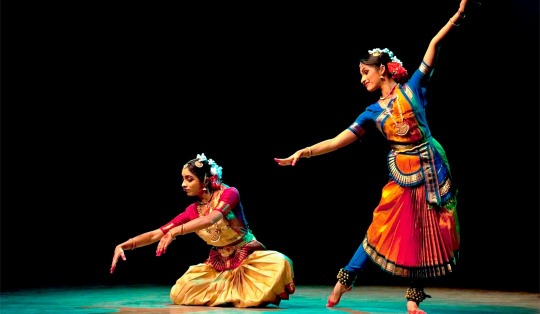
Indian Performing arts
Blogs Indian
Indian Performing arts
Art forms in India are ancient but are still in practice today. The performing arts, in particular, enjoy a status in our culture and showcase our tradition. Performing arts aren’t just about artistic expression. It is our tradition;...
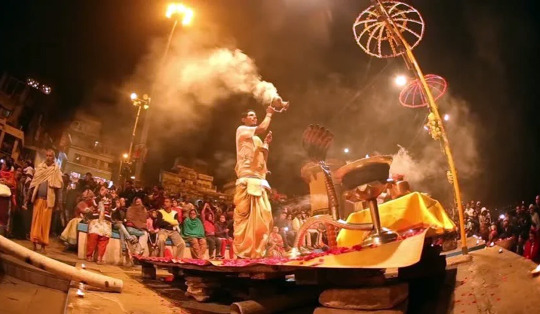
Kumbh Mela
Blog
All About Kumbh Mela The Kumbh Mela is probably the biggest Hindu festival celebrated four times in a 12-year time span. In fact, the pilgrimage rotates around four sacred river banks. These are the Ganges River in Haridwar, the Godavari in Nashik, Shipra in Ujjain,...
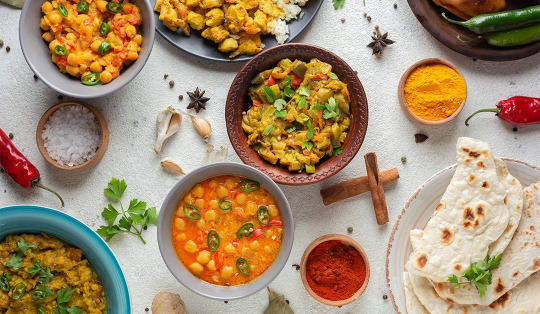
Indian Food And Culture
Blog
Indian Food And Culture: Things To Know When we talk about Indian cuisine, we often refer to lip-smacking delicacies that should be eaten in groups until everyone is full. You can get an assortment of dishes together in a single serving, which is also known as the...

Hindi Diwas
Blog,
Festivals 2021
Hindi Diwas: History, Significance, And Key Facts Hindi Diwas, which is celebrated on 14th September every year in India, is dedicated to promoting and propagating the official language, Hindi. After the four widely spoken languages,such as English, Spanish, and...
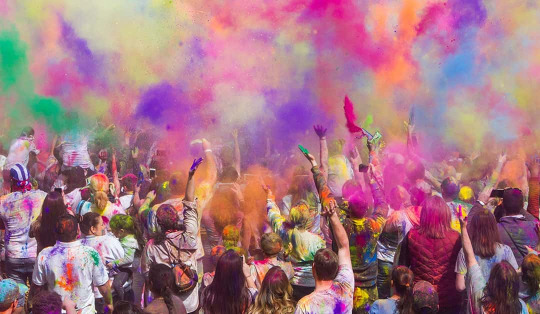
Holi Festival 2021
Blog, Festivals 2021
Holi Festival of India The Holi festival of India is one of the most famous festivals that draw crowds from all over the world, so that they can take advantage of the festive date, to enjoy this amazing gathering Holi is celebrated in February or March every year...
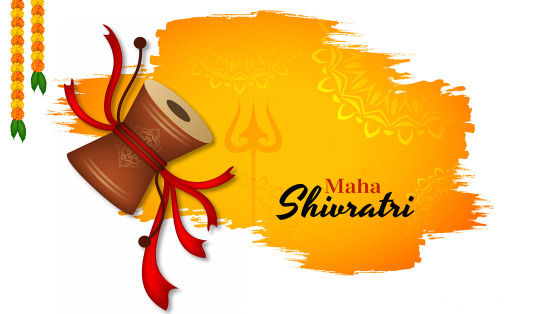
Maha Shivratri Festival 2021
Blog, Festivals 2021
Maha Shivratri Festival of India is an annual festival dedicated to Lord Shiva and it literally means the ‘Night of Lord Shiva’. This festival usually falls in the month of Phalguna or Maagh of the Hindu Lunar Calendar, which generally corresponds to...
2 notes
·
View notes
Text
Kumbh Mela 2025 Location: The Spiritual Significance of Prayagraj
Kumbh Mela can be categorised into Kumbh, Ardh Kumbh, Poorna Kumbh and Maha Kumbh. Here Ardh Kumbh takes place in Prayagraj and Haridwar every 6 years and Poorn Kumbh takes place on a rotational basis every 12 years in all four locations from Haridwar, Nashik, Prayagraj to Ujjain. The 2025 Maha Kumbh Mela is not an ordinary event but a spiritual event that takes place after 12 Poorna Kumbh Mela. This gathering not only showcases India’s rich cultural and religious heritage but also highlights the deep-rooted spiritual significance of Prayagraj, the land where divinity meets humanity.
Historical and Mythological Importance
Prayagraj, formerly known as Allahabad, holds immense importance in Hindu mythology and history. Situated at the confluence of three sacred rivers — the Ganga, Yamuna, and the mythical Saraswati — this location, referred to as the Triveni Sangam, is considered one of the holiest places in India. According to Hindu beliefs, taking a dip at the Sangam during the Kumbh Mela washes away sins and paves the way for moksha (liberation from the cycle of rebirth).

The origins of the Kumbh in Prayagraj can be traced back to the story of the Samudra Manthan (churning of the ocean) from Hindu scriptures. It is believed that during the churning, drops of Amrit (nectar of immortality) fell at four places, including Prayagraj. These spots became the venues for the Kumbh Mela, which rotates between Prayagraj, Haridwar, Ujjain, and Nashik every 12 years.
Significance of Allahabad Maha Kumbh Mela 2025
The Allahabad Maha Kumbh Mela 2025 promises to be a spiritual extravaganza, attracting pilgrims from diverse backgrounds. It is not just a religious event but a celebration of India’s unity in diversity. For millions, it is an opportunity to cleanse their souls, seek divine blessings, and immerse themselves in the teachings of ancient sages.
This year’s Kumbh Mela holds even greater significance as it is expected to witness advanced arrangements and eco-friendly practices to accommodate the growing number of attendees while maintaining the sanctity of the event.
Key Highlights of the Event
Ritual Baths at Triveni Sangam: The main ritual of the Kumbh Mela is the holy dip in the Triveni Sangam. Specific auspicious dates, known as Shahi Snans (royal baths), draw massive crowds as they are considered particularly powerful for spiritual cleansing.
Spiritual Pand Yagnas: Saints, seers, and scholars conduct enlightening sessions, sharing spiritual wisdom and engaging in yagnas (sacred rituals).
Akhadas and Processions: Various Akhadas (sects of ascetics) participate in vibrant processions, showcasing traditional practices and spreading messages of spirituality.
Cultural Performances: Folk music, dance, and other cultural events add to the festive atmosphere, giving visitors a glimpse of India’s diverse heritage.
Prayagraj’s Preparations for Kumbh Mela 2025
With an expected turnout of millions, the authorities have left no stone unturned to ensure seamless arrangements. Infrastructure developments, enhanced sanitation facilities, and security measures are being prioritised. Moreover, eco-conscious practices are being promoted to minimise environmental impact, ensuring the event remains sustainable.
Conclusion
The Kumbh Mela at Prayagraj is not merely a gathering; it is a spiritual journey that transcends boundaries and fosters a sense of global unity. The Allahabad Maha Kumbh Mela 2025 is a testament to India’s enduring cultural and spiritual legacy. For those seeking solace, divine connection, or an unforgettable cultural experience, Prayagraj in 2025 will undoubtedly be the place to be. Whether as a pilgrim or a spectator, this grand confluence of faith and tradition is bound to leave an indelible mark on the hearts of all who attend
0 notes
Text
Discover the Maha Kumbh Mela 2025: A Sacred Celebration of Faith and Spirituality
The Maha Kumbh Mela is one of the largest gatherings of people on Earth. Sadhus, saints, Nagas, ascetics, Kalpvasis, and pilgrims from all walks of life come together to experience this religious event, which leaves them spellbound with positivity and spirituality. In Hinduism, the Kumbh Mela is the most sacred pilgrimage, taking place in four different locations in India, rotating among them based on planetary positions. According to ancient Hindu scriptures, the Kumbh Mela is celebrated every 12 years in Haridwar on the banks of the River Ganga, in Nashik on the banks of the River Godavari, in Ujjain on the banks of the Shipra River, and in Allahabad at the confluence of the Ganges, Yamuna, and Saraswati rivers, known as Triveni Sangam.

The Kumbh Mela is held after every third year, the Ardh Kumbh in every sixth year, the Purna Kumbh in every 12th year, and the MahaKumbh in every 144th year after completing 12 Purna Kumbh Melas. It is a once-in-a-lifetime opportunity to witness the most pious event that sanctifies mind, body, and soul to enlighten the path of spirituality. This sacred month-long Hindu festival is observed in the Hindu month of Magh (January-February).
When to Visit?
The Maha Kumbh at Prayag Raj in 2025 is one of the much-awaited events of the century, where lakhs of devotees gather to take a dip at Sangam, marking the beginning of a 45-day long religious event from 13th January to 26th February. The entire atmosphere will be alive with Vedic chants, havan, and processions featuring Naga sadhus and other Akharas on camels and elephants, transforming the environment into a divine and serene setting. A key ritual at the Kumbh Mela is the ritual bath, known as Shahi Snan. This moment is magical, bringing immense joy to devotees fully immersed in the holy ambiance.
Important dates of Shahi Snan
13 January, Paush Purnima
14 January, Makar Sakranti
29 January, Mauni Amavaysa
3 February, Basant Panchami
12 February, Maghi Purnima
26 February, Mahashivratri
If you want to enjoy a peaceful experience, don’t go on these Shahi Snan to get the most enchanting experience. Throughout this amazing event in the state of Uttar Pradesh, some remarkable arrangements are made by the state and central government for visitors that ensure a hassle-free stay, food, and medical facilities for them. There is a large tented township with temporary cottages, huts, and luxurious tents, featuring high security and civic facilities for the convenience and safety of devotees.
How to Reach
By Air: - Prayagraj (Allahabad) Airport (Bamrauli Air Force Base) is closest to the city and serves a limited number of direct flights from Delhi, Mumbai, Pune, Bhopal, Bengaluru, Lucknow, Dehradun, etc.
By Rail: - Prayagraj is the hub and headquarters of the Northern Central Railways. On the auspicious occasion of Maha Kumbh, Indian Railways will operate around 3,000 special trains, including 700 long-distance Kumbh Mela Express Trains and 1,800 short-distance trains, to facilitate visitors. The Indian Railway has also introduced a new Ring Rail service for those visiting nearby sacred sites.
By Road: - Prayagraj is well connected to the National Highway and State Highway. State-run buses are available and bookings for them can be made from the UPSRTC (Uttar Pradesh State Transport Corporation). There are private buses, taxis, and cabs are also available at Pryagraj Bus Stand and Kachari Bus Stand to reach the site.
Don't miss this once-in-a-lifetime opportunity to witness the divine Maha Kumbh at Prayagraj in 2025. Immerse yourself in spirituality, experience the vibrant culture, and participate in this sacred event. Let India Triangle Tours assist you in planning a hassle-free and memorable journey. Contact us at +91 8130883271 or email us at [email protected] to book your customized tour today!
0 notes